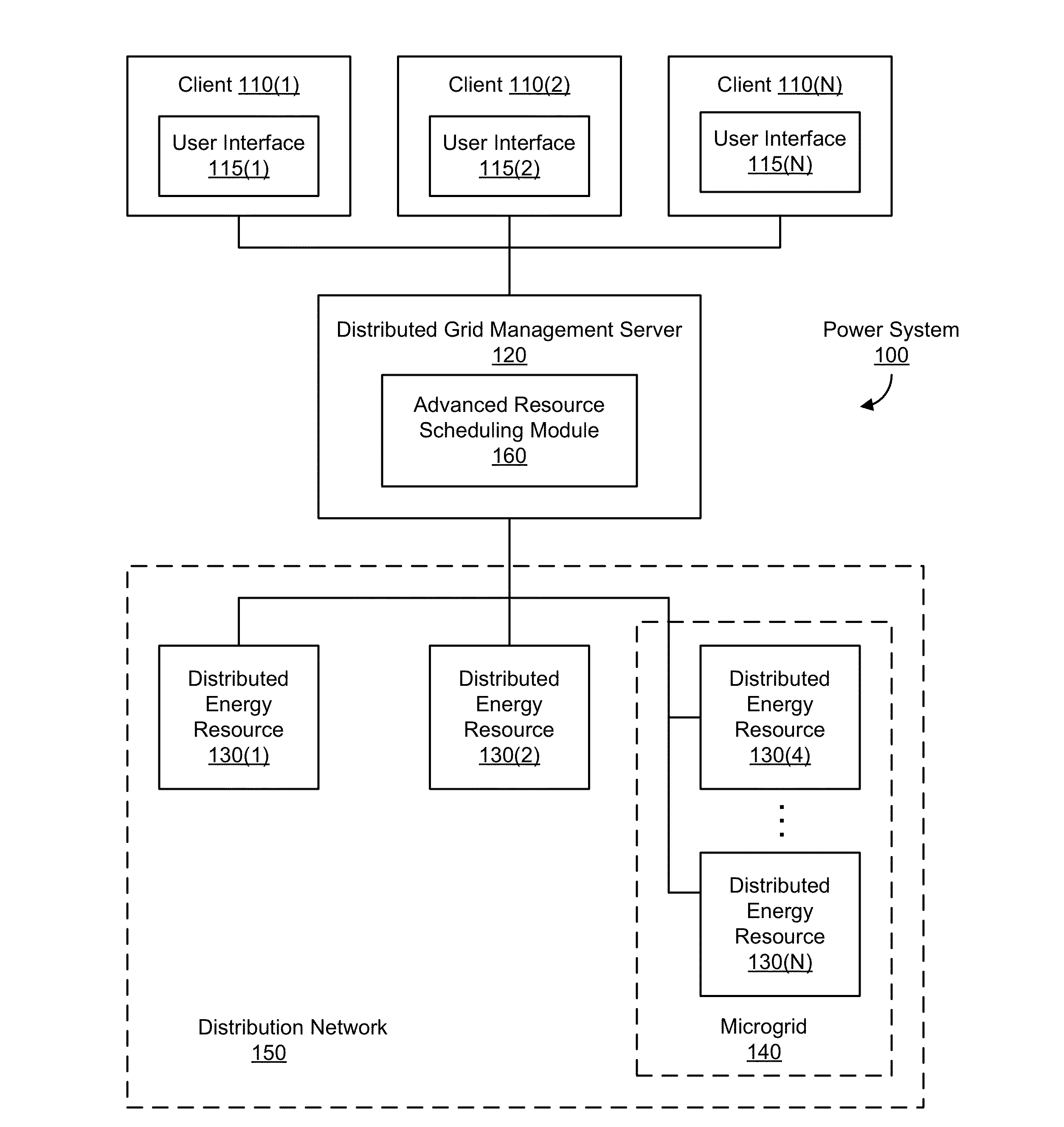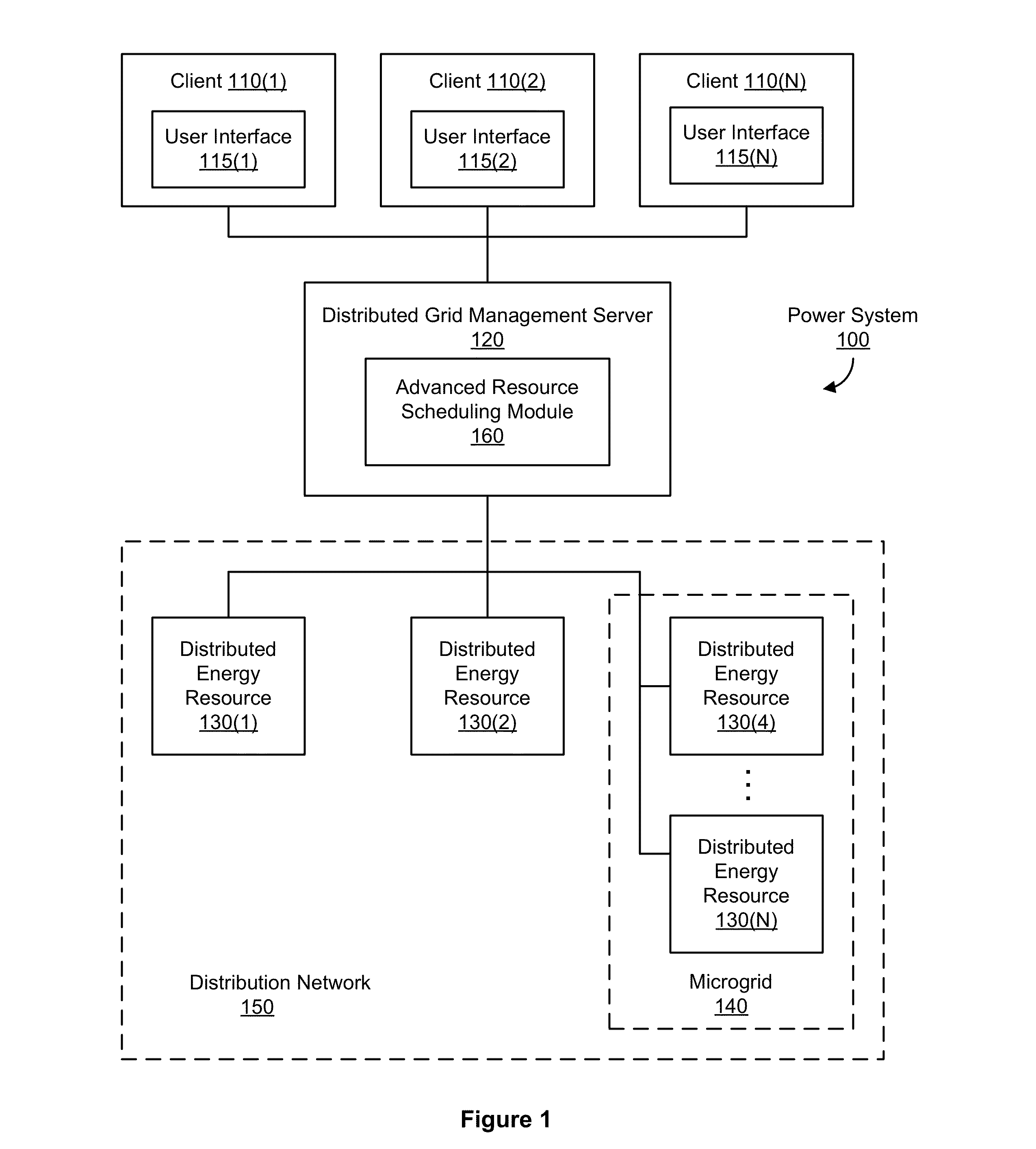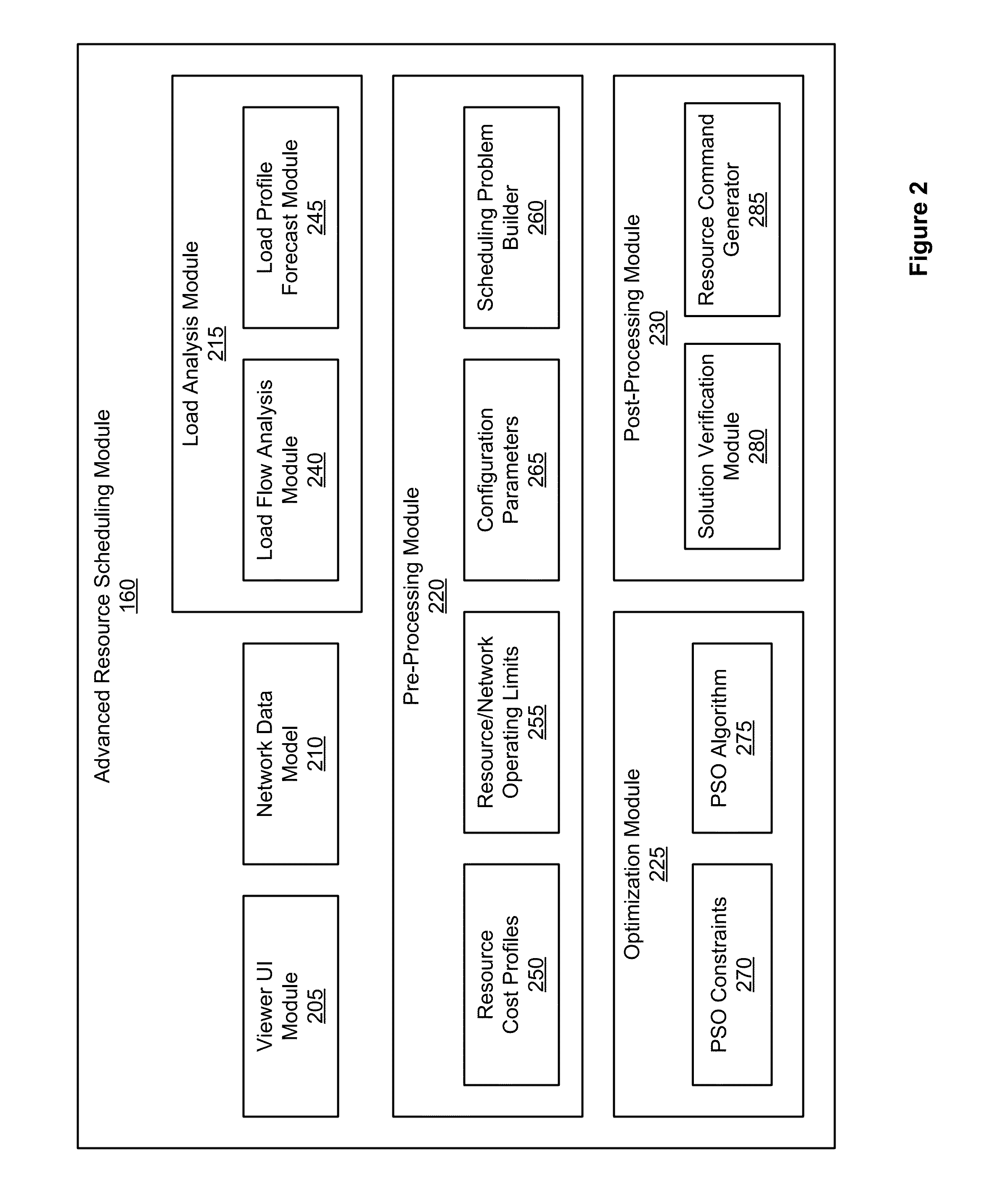Innovative Approach to Distributed Energy Resource Scheduling
a distributed energy resource and scheduling technology, applied in the field of power systems, can solve the problems of increasing the cost of upgrades, and increasing the cost of bulk generation schemes, so as to achieve the effect of keeping operating costs low
- Summary
- Abstract
- Description
- Claims
- Application Information
AI Technical Summary
Benefits of technology
Problems solved by technology
Method used
Image
Examples
example software implementation
[0174]FIG. 9 illustrates an example class hierarchy for an example software implementation of a particle swarm optimization algorithm. In the embodiment illustrated, class PSOInstance 905 includes various methods, such as an initialize( ) method and a solve( ) method, discussed below. ARS module can generate (or instantiate) an object of class PSOInstance 905 for each distributed resource scheduling problem that ARS module is solving. PSOInstance class 905 includes a swarm class 910, where a PSOInstance object (e.g., an instantiated object of PSOInstance class 905) can include multiple swarm objects (e.g., multiple instantiated objects of swarm class 910). Swarm class 910 includes particle class 915, where a swarm object can include multiple particle objects. Particle class 915 also includes various functions that are discussed below. Particle class 915 also includes FitnessFunction class 935, which provides functions used to evaluate fitness of a swarm object (where the swarm objec...
PUM
 Login to View More
Login to View More Abstract
Description
Claims
Application Information
 Login to View More
Login to View More - R&D
- Intellectual Property
- Life Sciences
- Materials
- Tech Scout
- Unparalleled Data Quality
- Higher Quality Content
- 60% Fewer Hallucinations
Browse by: Latest US Patents, China's latest patents, Technical Efficacy Thesaurus, Application Domain, Technology Topic, Popular Technical Reports.
© 2025 PatSnap. All rights reserved.Legal|Privacy policy|Modern Slavery Act Transparency Statement|Sitemap|About US| Contact US: help@patsnap.com



